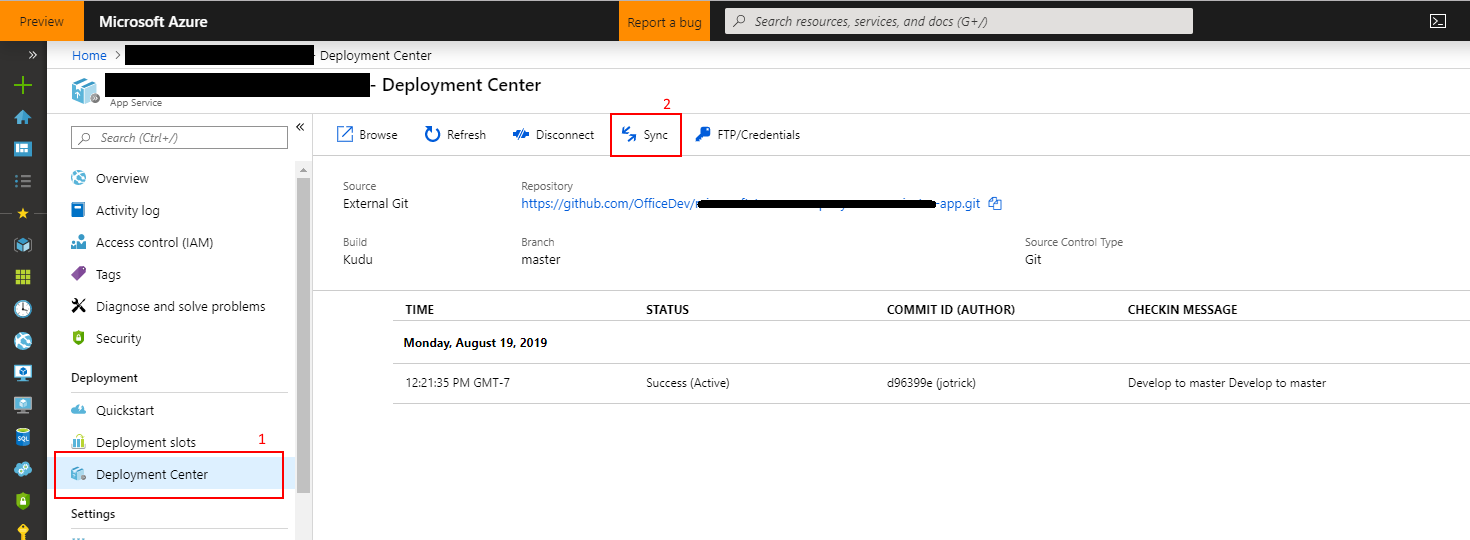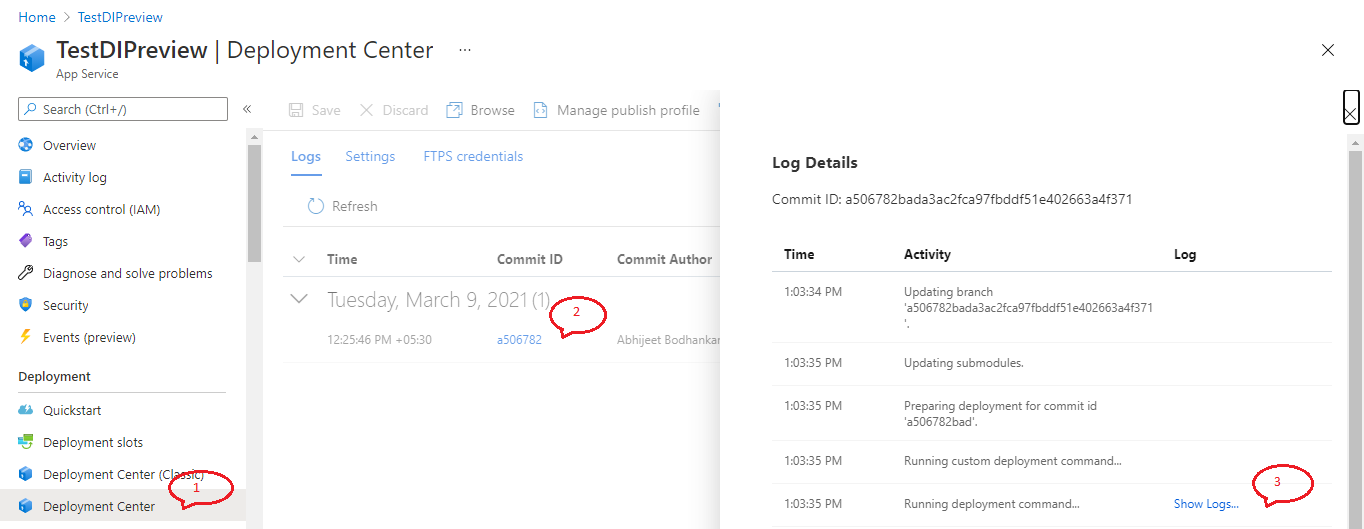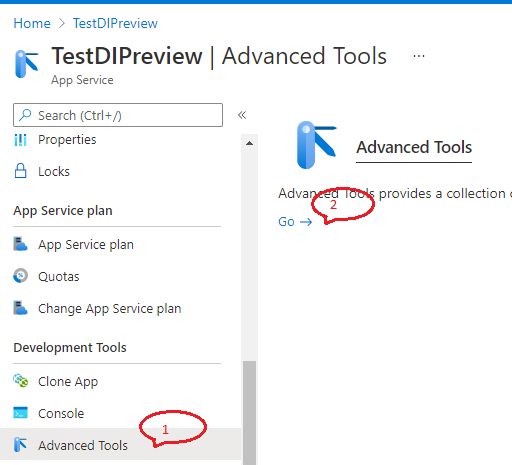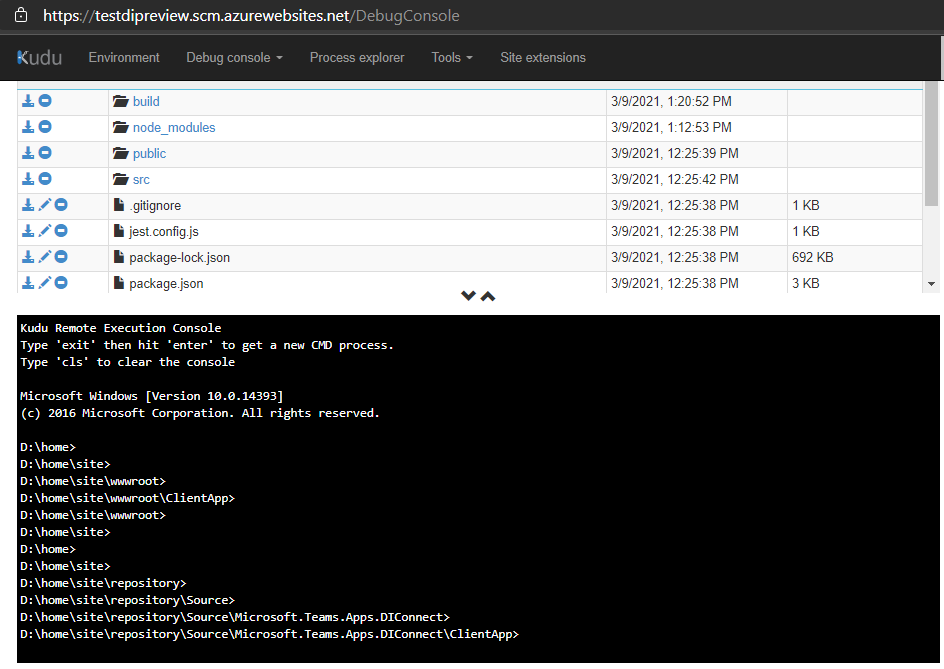Troubleshooting - OfficeDev/microsoft-teams-apps-groupconnect GitHub Wiki
General template issues
Generic possible issues
There are certain issues that can arise that are common to many of the app templates. Please check here for reference to these.
Problems deploying to Azure
1. Code deployment failure
{
"id": "/subscriptions/<subscription-id>/resourceGroups/<resource-group>/providers/Microsoft.Resources/deployments/Microsoft.Template/operations/E46C6DE7BE4DE2F9",
"operationId": "E46C6DE7BE4DE2F9",
"properties": {
"provisioningOperation": "Create",
"provisioningState": "Failed",
"timestamp": "2019-08-19T19:42:57.0367572Z",
"duration": "PT22M52.4117137S",
"trackingId": "8ca12d86-552a-402d-8b06-4fc8fb450bbb",
"statusCode": "Conflict",
"statusMessage": {
"status": "Failed",
"error": {
"code": "ResourceDeploymentFailure",
"message": "The resource operation completed with terminal provisioning state 'Failed'."
}
},
"targetResource": {
"id": "/subscriptions/<subscription-id>/resourceGroups/<resource-group>/providers/Microsoft.Web/sites/<resource-name>/sourcecontrols/web",
"resourceType": "Microsoft.Web/sites/sourcecontrols",
"resourceName": "<resource-name>/web"
}
}
}
The resource type Microsoft.Web/sites/sourcecontrols failed to deploy. The transitive dependency set of the front-end web app pulls in over 1,000 NPM packages, and sometimes there is an error fetching all of the packages.
Fix

- Go to the "Deployment center" section of the app service that failed to deploy.
- Click on "Sync" to restart the deployment.
If you had to do this, you may not have received the authorBotId, userBotId and appDomain values at the end of the deployment. To find them, go to the "Configuration" section of your Web App.
-
authorBotId: This is the Microsoft Application ID for the Author's app. It can be found in the "AzureAd:ClientId" field of your configuration e.g. 5630f8a2-c2a0-4cda-bdfa-c2fa87654321. For the following steps, it will be referred to as %authorBotId%.
-
userBotId: This is the Microsoft Application ID for end user app. It can be found in the "UserAppId" field of your configuration e.g. 1240f8a2-c2a0-4cda-bdfa-c2fa87659876. For the following steps, it will be referred to as %userBotId%.
-
appDomain: This is the base domain for the Group Connect app. It is the value in the "AzureAd:ApplicationIdURI" field of your configuration without the "api://" e.g. appName.azurewebsites.net. For the following steps, it will be referred to as %appDomain%.
Delete node modules
If the deployment failed even after retry, then please follow below steps to clear node modules:
-
Go to the "Deployment center" section of the app service.
-
Click on the commit id > click Show Logs... for Running deployment command... in the flyout menu > Copy the log (this would be helpful to raise issue in GitHub if not resolved)
-
At the bottom of log, if you see npm error codes then it is likely the node module issue and you would require to clean it in app service.

-
Go to "Advanced Tools" section of the app service and hit "Go".

-
Select Debug console from menu and select CMD from dropdown menu

-
Once redirected to console page, select folder site > repository > Source > Microsoft.Teams.Apps.DIConnect (or DIConnect) > ClientApp

-
On the file section, click on - icon to delete node_modules folder.

-
Once done go back to Azure portal under Deployment center and hit sync again. This will retrigger the node module creation.
We are currently looking into how to make this process more resilient to intermittent failures.
2. Forgetting the botId or appDomain
If you had to do this, you may not have received the authorBotId, userBotId and appDomain values at the end of the deployment. To find them, go to the "Configuration" section of your Web App.
-
authorBotId: This is the Microsoft Application ID for the Author's app. It can be found in the "AzureAd:ClientId" field of your configuration e.g. 5630f8a2-c2a0-4cda-bdfa-c2fa87654321. For the following steps, it will be referred to as %authorBotId%.
-
userBotId: This is the Microsoft Application ID for end user app. It can be found in the "UserAppId" field of your configuration e.g. 1240f8a2-c2a0-4cda-bdfa-c2fa87659876. For the following steps, it will be referred to as %userBotId%.
-
appDomain: This is the base domain for the Group Connect app. It is the value in the "AzureAd:ApplicationIdURI" field of your configuration without the "api://" e.g. appName.azurewebsites.net. For the following steps, it will be referred to as %appDomain%.
3. Error when attempting to reuse a Microsoft Azure AD application ID for the bot registration
Bot is not valid. Errors: The Microsoft App ID is already registered to another bot application.. See https://aka.ms/bot-requirements for detailed requirements.
- Creating the resource of type Microsoft.BotService/botServices failed with status "BadRequest"
This happens when the Microsoft Azure application ID entered during the setup of the deployment has already been used and registered for a bot, for instance, if a previous deployment step failed after the bot was created.
Fix
Either register a new Microsoft Azure AD application or delete the bot registration that is currently using the attempted Microsoft Azure application ID.
4. Proactive app installation is not working
If proactive app installation for a user is not working as expected, make sure you have performed the following:
- Grant Admin consent to the application for all the graph permissions mentioned here.
- "ProactivelyInstallUserApp" configuration is enabled (set to "true") for the web app and the prep-function.
- "UserAppExternalId" configuration matches with the User app Id (in the Teams App manifest) for the web app.
- Upload the User app to your tenant's app catalog so that it is available for everyone in your tenant to install.
Didn't find your problem here?
Please report the issue here